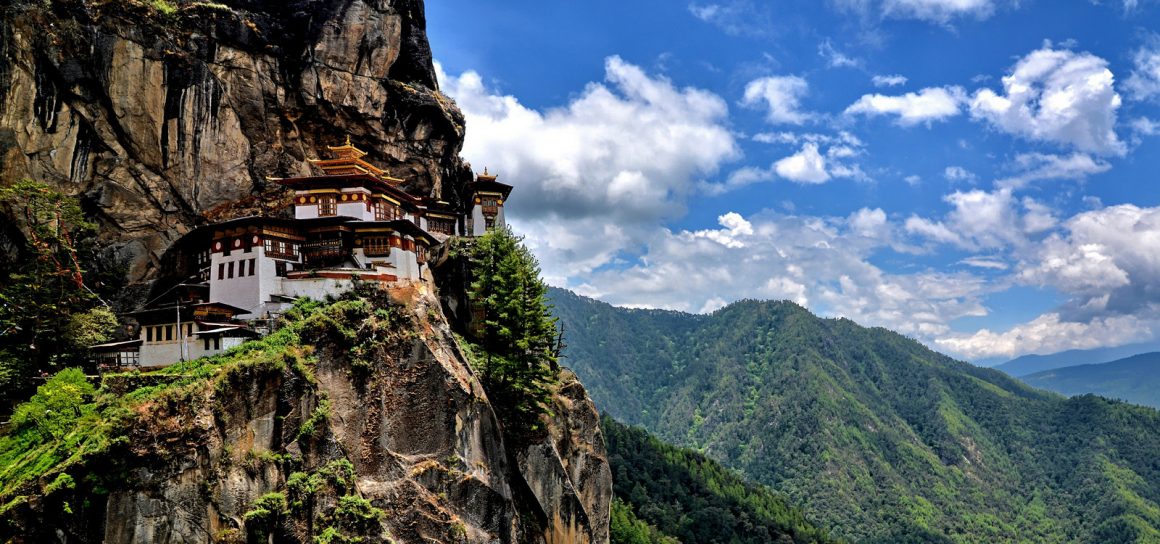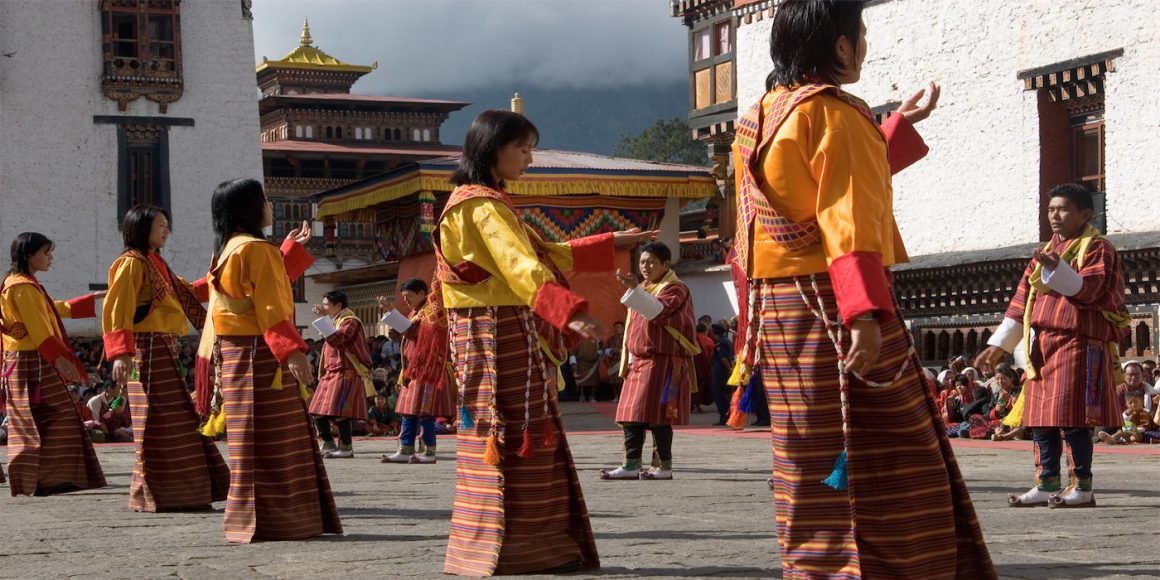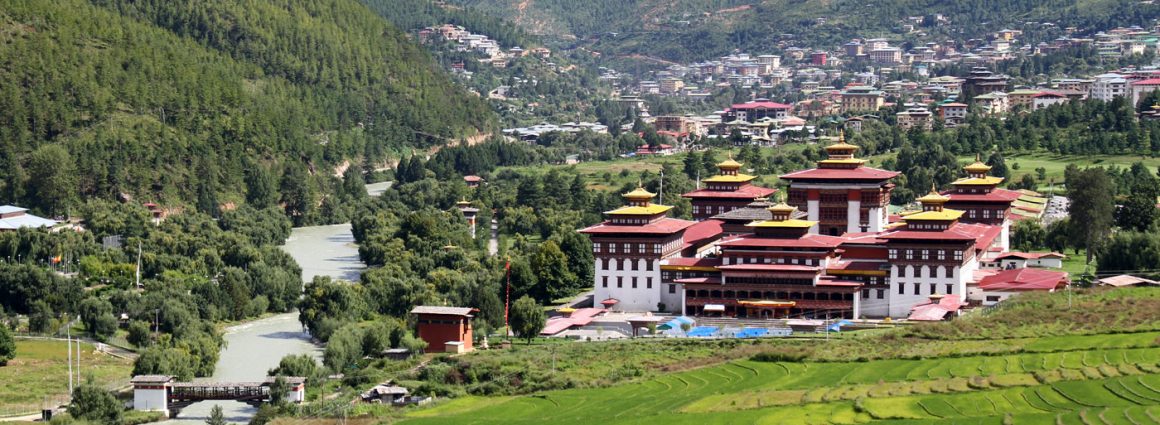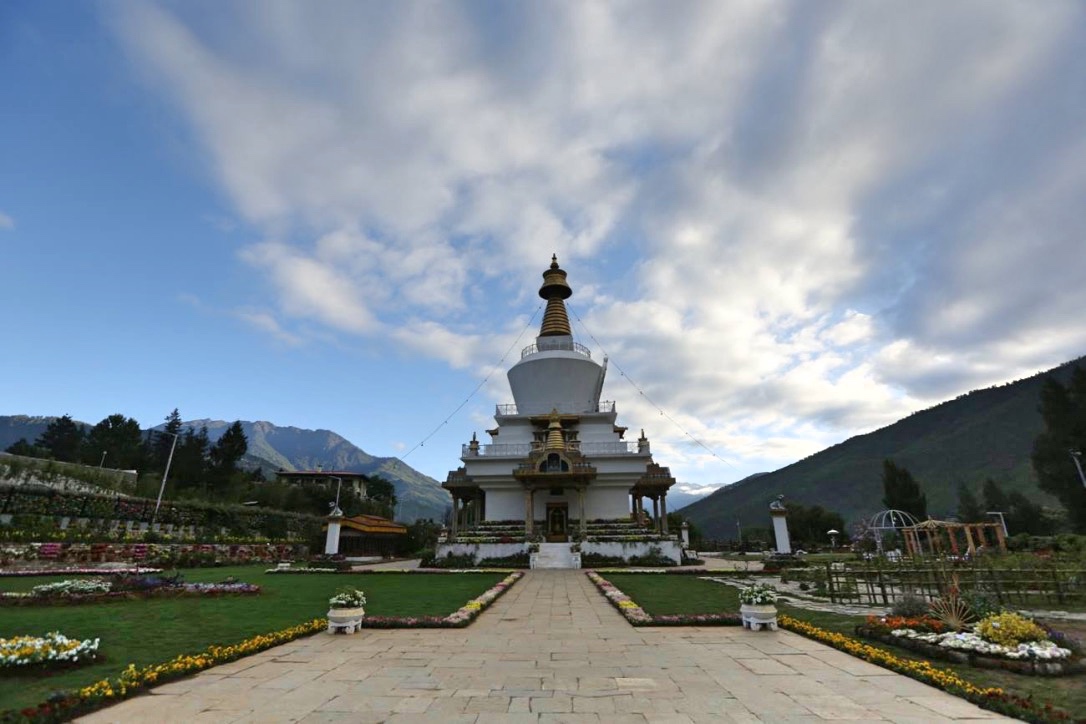Thimphu festival is one of the most popular festivals in the country. During the mask dances known as cham and are performed to bless onlookers, to teach them the Buddhist dharma, to protect them from misfortune and to exorcise all evil. It is believed that merit is gained by attending the tsechus. The dances invoke the deities to wipe out misfortunes, increase luck and grant personal wishes.
A group of ladies perform traditional Bhutanese dances during the intervals between masked dances. Apart from its religious implications, the Tshechu is also an annual social gathering where people dress in their finest clothing and jewelleries.Bring you a closer contact with the people and give you an insight into the Bhutanese lives, beliefs and more.
Day 01 : Arrive Paro, Paro-Thimphu
Distance: 54 km
Estimated travel time: 1 hour
Arrive at Paro.You will be welcome by your travel guide at the Paro Airport.
After the refreshment, visit the Ta Dzong rated as one of the finest natural Museum in South Asia, and is filled with antique thanka paintings, textiles, weapons and Armour. The visit the Rinpung Dzong ( in the same location) built in 1645 to defend the valley against Tibetan invaders. The Dzong is now use as an administration center and school for monks. Then walk down to Rimpung Dzong Bridge, one of the oldest bridges in Bhutan.
In the evening drive to Thimphu, the capital of Bhutan. Dinner and overnight at hotel in Thimphu.
Day 02:Thimphu Sightseeing
After breakfast, you may choose to visit some of the places given below in Thimphu:
National Textile Museum which is a good place to see the art of traditional weaving being kept alive and preserved through exhibition and has a good collection of old textiles which are rich in colors and designs.You will also see people weaving with intricate designs.
The National Institute of Traditional Medicine, where medicinal herbs are compounded and dispensed, and traditional medical practitioners trained.
The folk heritage museum, an outdoor museum that gives an insight into rural life.
The School of Traditional Painting of Arts and Crafts where students undertake a six-year course on the 13 traditional arts and crafts of Bhutan.
Traditional Bhutanese paper making factory. The handmade paper making in Bhutan stemmed from the age old tradition originated in 8th century of Bhutanese history. The handmade paper constitutes as valuable National heritage of Bhutanese cultural identity and is preserved through all the ages. The Traditional paper is recognized and held high esteem both in home and outside world. Jungshi Paper Factory was established in November 1990 as an undertaking of the Royal Government of Bhutan. The unit now boasts as a major and sole dealer in handmade paper and its products.
Drive to Kuenselphodrang where Bhutan’s largest Buddha statue is perched on a hillock overlooking Thimphu valley and also take a leisure walk through Kuenselphodrang Nature park , you can take a leisure walk to the park and enjoy the nice view of the entire Thimphu valley below.
Takin Preserve, which houses the national animal the Takin that is only found in Bhutan. This is an extremely rare member of the goat family. Found in herds in the very high altitudes (13,125ft and over). They live on a diet of grass and bamboo. It can weigh as much as 550 pounds.
Centenary Farmers’ market (if tour coincides with Thu-Sun) where farmers would be selling their wide range of farm produces (vegetables from farms and wild ferns or bamboo shoots collected from forest, flour, rice, roasted rice, rice flakes, spices, yams both cultivated and wild ones collected from forests, fruits, etc) and livestock products (mainly cheese and butter). Free interaction with people from town as well as from villages come to this weekend market. Weekend market is from Thursday-Sunday( 4 days).
The Memrial Chorten which was constructed in 1974 as a memorial for the third King of the country, King Jigme Dorji Wangchuck, who is widely regarded as the father of modern Bhutan.
Government-run Handicrafts Emporium and local crafts shops, to browse through examples of Bhutan’s fine traditional arts. Here you can buy hand-woven textiles, thangkha paintings, masks,ceramics, slate and wood carvings, jewelry, and other interesting items made from local materials.
Overnight at a hotel in Thimphu.
Day 03 Thimphu Tsechu
Attend first day Thimphu Festival. Venue- Tashichhoedzong courtyard. This is the perfect occasions to witness the Bhutanese unique culture, religion and history. Also visit Tashichhoedzong, a fortress of the glorious religion. It was built in 1641 by ZhabdrungNgawangNamgyel and was reconstructed into present structure by the late King, His majesty JigmeDorjiWangchuck in the year 1962-1969. It houses the secretariat building, the throne room and the office of the king, and the central monk body.
Overnight at a hotel in Thimphu.
Day 04: Thimphu Tshechu OR Thimphu Short Hike to Tango Monastry
Option 1: Attend second day Thimphu Festival. Venue- Tashichhoedzong courtyard
OR
Option 2: A Hike to Cheri Monastery and Tango Monastery
After breakfast, drive about 30 minutes to the base camp of Cheri Monastery and hike up to the Monastery. The walk up to the Monastery is through the forest filled with Rhododendron flower trees which will be in full bloom during April month. This is the place where monks undergo meditation with duration ranging from 4 months to 3 years. You will experience complete peace and serenity in this area. In this undisturbed environment, musk deer are spotted often. The hike up will take approximately 50 minutes. The view from Cheri Monastery is breathtaking. Walk down and rest for a packed picnic lunch. Then hike up to Tango Monastery. Tango Monastery is the center for higher studies for monks. The hike up will take approximately 50 minutes. The view from Tango Monastery is breathtaking.
Drive back to Thimphu and evening free to relax / stroll around Thimphu town.Overnight at hotel in Thimphu.
Day 05: Thimphu -Punakha /Wangduephodrang
Distance: 71km
Estimated travel time: 2 1/2 hours
After breakfast, drive to Punakha through Dochula Pass (3,088m/10,130ft). In the clear spring sky; enjoy the panoramic view of the Himalayan Mountain ranges. Then pass by the beautiful 108 chortens built on the hill by Her Majesty AshiDorjiWangmo (Queen of Bhutan) for the security and well being of His Majesty, the King of Bhutan. And visit DrukWangyalLhakhang .The DrukWangyalLhakhang (temple) was built to honor His Majesty the fourth DrukGyalpo, JigmeSingyeWangchuck. The past and future appear to merge in the details of the lhakhang (temple) that tells the story of a supreme warrior figure whose vision pierces the distant future.
Then drive further onto Punakha, on the wayt,visiting the Devine Madman’s Monastery-ChhimiLhakhang, famously known for its fertility shrine, where one can receive a special fertility blessing.
Afternoon visit the Punakha Dzong, located on the island of the Pho – Chu (male river) and the Mochu (female river). The dzong was built in 1637 by ZhabdrungNgawangNamgyal to serve as the religious and administrative seat of the region. It was here that the dual system of government was introduced in the 17th century and in 1907, enthroned the first King GongsarUgyenWangchuck. Damaged over the centuries by four catastrophic fires and an earthquake, the dzong has been fully restored in the recent years by the 4th King JigmeSingyeWangchuck. At the dzong you can see the highest standards in woodwork. Also visit the massive Kuenray, the Coronation Hall of all Bhutanese kings, the Dzongchung at the entrance to the dzong and the cantilever bridge over the Mochu that has been recently renovated.
In the evening visit local markets in Punakha orWangdue. Overnight at a hotel in Punakha/Wangdue.
Day 06: Wangduephodrang/Punakha-Paro
Distance: 125 km
Estimated travel time: 3 1/2 hours
After breakfast, drive through upper Punakha valley passing through farmhouses and take a leisure walk through farmhouses and then through nature to the beautiful Khamsum Yuelley Namgyal Chorten temple built by the Queen of Bhutan for peace and stability in this ever-changing world. This temple is situated on the hilltop overlooking the valley below. The leisurely walk up to the temple would take about 1 hour. Visit the temple and also enjoy the breathtaking view from there.
Then drive to Paro with lunch enroute. On arrival at Paro, check into your hotel and after a refreshment visit Paro Dzong, a fine example of Bhutanese historic architecture. It is also known as the Rinpung Dzong which means a “fortress that sits on a heap of jewels”. This imposing dzong located above the Paro River is a fine example of Bhutanese architecture with its inward sloping walls that rise to an impressive height. The dzong was built in the 16th century on the foundation of a monastery built by Guru Rinpoche (who is regarded as the “second Buddha.”) .From the dzong, walk further down to Nyamai Zampa, an oldest traditional cantilever bridge in Bhutan.
Overnight at hotel in Paro.
Day 07: A Day Hike to Taktsang Goempa ( Tiger’s Nest Monastery) in Paro
After breakfast, travel to Paro which will take about 1 hour and on arrival at Paro hike to Taktsang Goempa (Tiger’s Nest Monastery). The hike upto the viewpoint will take about 1 1/2 hours and from there you will enjoy a spectacular view of the monastery clinging to the side of the cliff.You will stop here for refreshments and then hike further upto the monastery which should take another 1 1/2 hours.
It was first built in 1692, around the Taktsang Senge Samdup, a cave where Guru Padmasambhava is said to have meditated for three months in the 8th century. It is believed that Guru Rinpoche (Guru Padmasambhava) flew to this location from Khenpajong, Tibet on the back of a tigress and subdued a demon. He then performed meditation in one of the caves here and emerged in eight incarnated forms (manifestations) and blessed the place. Subsequently, the place came to be known as the “Tiger’s Nest”. Guru Padmasambhava is known for introducing Buddhism to Bhutan. Today, Paro Taktsang is the best known of the thirteen caves in which he meditated.
After visiting the monastery, walk back downhill to the road with lunch at the viewpoint cafeteria. Then drive back to your hotel after visiting Kichu Lhakhang on the way. Kichu Lhakhang, one of the 108 temples built in the 7th century by the Tibetan King Songsten Gampo. The story goes that a giant demon lay across the whole area of Tibet and the Himalayas and was preventing the spread of Buddhism. To overcome her, King Songtsen Gampo decided to build 108 temples, which would be placed on all the points of her body. Of these 108 temples, 12 were built in accordance with precise plans. Thus, it happened that in about the year AD 638 the temple of Jokhang in Lhasa was built over the very heart of the demon.
In the evening relax and overnight at a hotel in Paro.
Day 08: Depart Paro
After breakfast,your tour guide will see you off at the Paro International Airport for your onward journey.
End of Tour Program
- A sustainable tourism Royalty of US $65 per person per night. This Royalty goes towards free education, free healthcare, poverty alleviation, along with the building of infrastructure
- All internal taxes and charges
- A minimum of 3-star accommodation (4 & 5 star requires an additional premium).
- All Meals
- All travel with a licensed Bhutanese Tour Guide
- All Internal Transportation
- Camping Equipment and Haulage for Trekking Tours
- Porter and Pony Charges
The rates given above are applicable per tourist per night halt in Bhutan. On the day of departure, it shall be limited to breakfast only and any extra requirements shall be payable on actual basis.
- Airfare and Airport Tax
- Bhutan Visa Fee (US $40 per person)
- Alcoholic beverages and drinks.
- Luxury hotels
- Insurance and Travel and others
- Trips/Gratitude to the guide and driver
The rates given above are applicable per tourist per night halt in Bhutan. On the day of departure, the ‘local agents’ host obligation shall be limited to breakfast only and any extra requirements shall be payable on actual basis.
However, the Luxury hotel surcharges are extra over the normal tariff and range from US $500-US $1800 depending on which you choose. International standard luxury hotels available are Aman resort, Uma, Taj Tashi and Zhiwaling.




